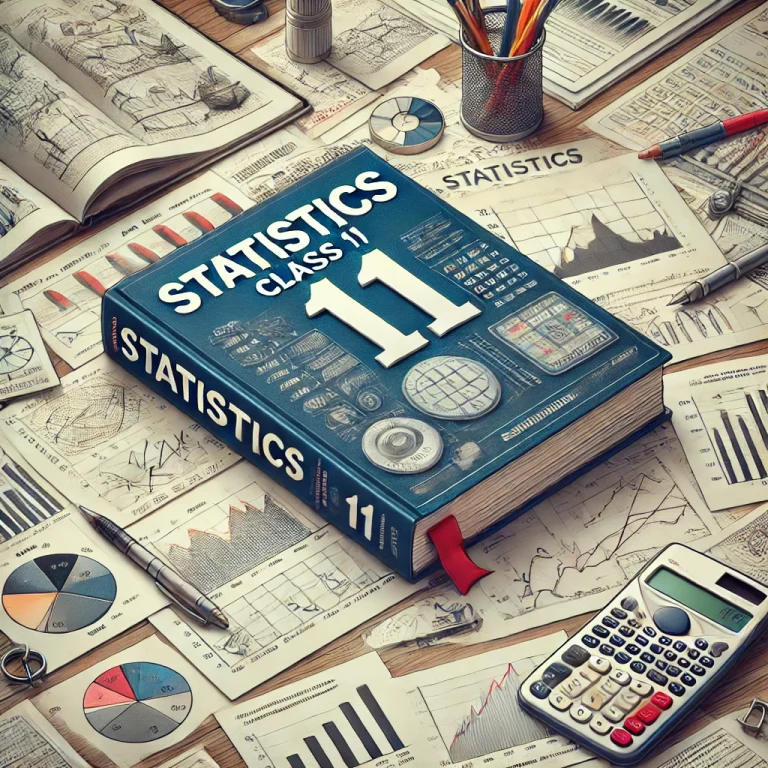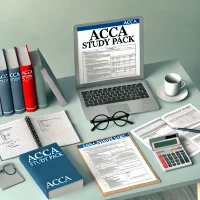NCERT Class 11 Statistics Books are prepared to make students study well and get good marks in the yearly examination. The NCERT Statistics textbook for Class 11 is prepared per the new CBSE syllabus and guidelines. It is a key subject for Commerce students. The statistics class 11 book ensures that the students get an overview of foundational concepts in data analysis, probability, and statistical methods. It serves as a vital source, especially in economics, to understand vital statistics tools and to figure out the pattern, distribution, and trend of data. NCERT has prepared it and is widely used for structured learning.
Statistics for Economics Class 11 NCERT Book PDF: Download Free
The statistics class 11 book is very popular because of its clear explanations, practical examples, and comprehensive syllabus coverage. Students can download the statistics book for class 11 NCERT for free now. You can search on the official NCERT website or from the download link given below. These PDFs facilitate the study and revision most conveniently. Students who want to understand statistics in Hindi can download the Statistics for Economics Class 11 NCERT book PDF in Hindi to get detailed answers and explanations of the exercises in the textbook.
| Download PDF for NCERT Class 11 Statistics Book | |
| NCERT Book for Class 11 Statistics (English) | Download PDF |
| NCERT Book for Class 11 Statistics (Hindi) | Download PDF |
NCERT Class 11 Statistics Book
NCERT Class 11 Statistics textbook is a complete guide meant to introduce the fundamental concepts of statistics to the students. This textbook, as intended, is designed to equip the students with a proper understanding that will help them progress in commerce, economics, or related fields. This book covers many topics, including data collection, presentation, analysis, probability, and interpretation of statistical measures.
Through practical examples and clear explanations, the book helps students understand the importance of statistical tools in decision-making processes across various fields, such as economics, business, and social sciences. By mastering these statistical techniques, students learn to analyze data, interpret results, and make informed decisions based on quantitative evidence.
| NCERT Class 11 Statistics Chapter 1 | Download PDF |
| NCERT Class 11 Statistics Chapter 2 | Download PDF |
| NCERT Class 11 Statistics Chapter 3 | Download PDF |
| NCERT Class 11 Statistics Chapter 4 | Download PDF |
| NCERT Class 11 Statistics Chapter 5 | Download PDF |
| NCERT Class 11 Statistics Chapter 6 | Download PDF |
| NCERT Class 11 Statistics Chapter 7 | Download PDF |
| NCERT Class 11 Statistics Chapter 8 | Download PDF |
| NCERT Class 11 Statistics Chapter 9 | Download PDF |
NCERT Books for CBSE Class 11 Statistics: Chapter-wise Details
Statistics is a discipline that requires dedicated attention and a systematic learning approach to learn its concepts. NCERT Class 11 Economics Statistics books are tailored to simplify fundamental principles, strictly follow the CBSE curriculum, and give all-around preparation. The books help students prepare for their examinations without using other study materials. The Class 11 Statistics NCERT PDF can be downloaded to help you understand the syllabus in-depth.
| Chapter | Topics | Key Content |
|---|---|---|
| 1 | Introduction | Basics of statistics, its features, and limitations. |
| 2 | Collection of Data | Primary and secondary data sources and collection methods. |
| 3 | Organization of Data | Data classification, statistical series. |
| 4 | Presentation of Data | Textual, tabular, and diagrammatic presentation. |
| 5 | Measures of Central Tendency | Calculating mean, median, mode. |
| 6 | Measures of Dispersion | Range, mean deviation, standard deviation. |
| 7 | Correlation | Types and estimation of correlation. |
| 8 | Index Numbers | Construction and types of index numbers. |
| 9 | Environment and Sustainable Development | Assumed focus on environmental impacts and sustainable practices. |
Chapter 1: Introduction
The first chapter of the NCERT book Statistics for Economics Class 11 introduces important points about economics. It leads to defining statistics, encompassing its scope according to Bowley’s view, highlighting the important characteristics of statistics in a plural sense. It also investigates the concept in its singular form, as explained by Seligman, enabling students to comprehend the role and significance of statistics in economics. The chapter closes with the fallibility of statistics. Additionally, exercises at the chapter end contain questions that the students can use to measure their comprehension of the content dealt with.
Chapter 2: Data Collection
Chapter 2 of the NCERT textbook for Class 11 Economics Statistics explores the sources and types of data, distinguishing between primary and secondary data. The chapter explains in detail the different statistical techniques used for collecting data, including:
- Direct personal investigation
- Indirect oral investigation
- Collection of information from correspondents or local sources
- Use of schedules and questionnaires
- Censuses
- Sampling techniques
Chapter 3: Data Organization
Chapter 3 of NCERT Statistics for Class 11 introduces students to the important topic of data organization under the classification heading. After introducing the chapter’s subject matter, the chapter discusses the objectives and fundamental features of good classification, laying a basic concept on how statistical data must be dealt with.
The chapter then acquaints students with various statistical series essential for efficiently structuring data. These are:
- Individual series: This category is concerned with data points viewed separately.
- Frequency series: These series categorize data points that have a common frequency.
Much of the chapter is devoted to discussing frequency distributions, one of the important statistics tools used to analyze data sets’ details. The chapter aims to acquire the student with an intensive knowledge about organizing data to create a better understanding and facilitate easy analysis.
Further, the chapter comprises in-depth practice problems with exam questions of similar kinds. Solving these exercises repeatedly helps students deal with different questions that may come their way in the examination to become ready and surefooted about statistics.
Chapter 4: Presentation of Data
Chapter 4 of the NCERT Class 11 Economics Statistics deals with different modes of presenting data, an important topic in statistical analysis. The chapter familiarizes students with three main modes of presenting data:
- Textual Presentation: In which data is presented in the text.
- Tabular Presentation: In which data is presented in tables.
- Diagrammatic Presentation: In which data is depicted through different graphical forms.
Students not only acquire the practical techniques required to represent data graphically but also the theoretical underpinnings that govern these graphic displays. The chapter finishes by considering the strengths and weaknesses of graphical data presentation, with a fair assessment of this vital statistical tool.
Chapter 5: Measures of Central Tendency
Measurements of central tendency are concerned with the central value of a series of statistics. This chapter mostly discusses the various aspects of statistics measurements. Through this chapter of the NCERT books on Class 11 Economics Statistics, economics students can learn how to find the arithmetic mean step by step. By following this book, students can easily learn the tricks and techniques for finding various statistical data. For instance, Median, Percentile, Quartiles, and Mode applications often become intricate and troublesome.
However, NCERT books have made all these concepts easy to understand so that students can understand them without losing much time. Also, by doing the exercise at the end, you can clear your concept immediately.
Chapter 6: Measures of Dispersion
Chapter 6 of the NCERT textbooks of Class 11 Economics Statistics focuses on the measure of dispersion, a significant statistical tool that indicates the spread or variation of a data set. The chapter comprehensively analyzes all the methods for measuring dispersion to give students a thorough knowledge of every method. Some of the measures of dispersion are covered as key concepts:
- Range: The variation between the maximum and minimum values in the data set.
- Mean Deviation: The mean of the absolute deviations from a central point, such as the mean or median.
- Quartile Deviation: Indicates the spread of the middle 50% of data points.
- Standard Deviation: The most widely used measure that expresses the degree of variation or dispersion of a collection of values.
The in-depth explanations in this chapter demystify these concepts, which are sometimes abstract and hard for students to understand. Such calculations may look complicated and formidable, and because of this, interest in such important concepts dwindles.
Nonetheless, by employing the simple explanations and step-by-step procedures described in the NCERT textbook, students can understand how to properly implement these measures of dispersion comprehensively. The book leads students through the interpretation and day-to-day application of these procedures. This allows them to obtain the best results and stay interested in the subject. The basic understanding is instrumental in gaining awareness of variability in data, an important skill in statistics.
Chapter 7: Correlation
Chapter 7 of the NCERT books for Class 11 Economics Statistics delves into the concept of correlation, a statistical technique used to determine the relationship between variables, such as demand and price. This chapter categorizes correlation into two main types:
- Positive Correlation: An increase in one variable leads to an increase in the other.
- Negative Correlation: Where an increase in one variable leads to a decrease in the other.
Students will also explore the degree of correlation, understanding how strongly two variables are related. The chapter provides an in-depth discussion of various methods used to estimate correlation, including Karl Pearson’s coefficient of correlation, which is a key component of this chapter.
Chapter 8: Index Numbers
Chapter 8 of NCERT books for Class 11 Economics Statistics deals with index numbers. This important statistical tool is necessary for students, particularly those appearing for board exams or national entrance tests. Understanding this topic is the key to solving examination questions about this subject.
This chapter makes students familiar with the concept and construction of index numbers. These include different types, such as simple and weighted index numbers. Certain construction methods are required for each type, which are well explained to ease the learning process.
By downloading NCERT Class 11 Economics Statistics books, students will learn how various index numbers are formulated and applied. The chapter is presented in a manner that makes it simple for students to identify the types, making it easy for them to understand the subtleties of the topic without much hassle.
Chapter 9: Application of Statistical Tools
The final chapter of NCERT textbooks for Class 11 Economics Statistics provides all the data types one needs to perform a statistical operation. The chapters preceding this one discussed many basic concepts of statistics. However, this chapter only focuses on the practical application of those concepts.
Statistics Class 11 Book FAQs
How does statistics class 11 book help in learning economics?
The statistics class 11 book offers tools directly applicable to economics, such as data analysis, central tendency measures, and probability. It provides students with analytical skills crucial for understanding economic data.
Where can I download the Statistics for Economics class 11 NCERT book pdf?
The statistics for economics class 11 NCERT book pdf is available on the NCERT website or from the links provided above in this article. It provides a comprehensive understanding of economics-based statistics, including sampling, probability, and data interpretation, all essential for understanding economics.
What topics are covered in Class 11 Statistics Book?
The class 11 statistics book covers a wide range of topics. These include data organization, graphical representation, central tendency, probability, and statistical tools for economics. These concepts lay the groundwork for more advanced studies.
What is best statistics book for class 11?
CBSE Class 11 students can first cover the NCERT book for Statistics to get a fair idea of the syllabus. Then, if they need additional consultation from other books for reference purposes, they can follow TR Jain and VK Ohri’s Statistics for Economics. No matter what book you are following, proper revision and frequent practice are essential to obtaining good marks in Statistics.


